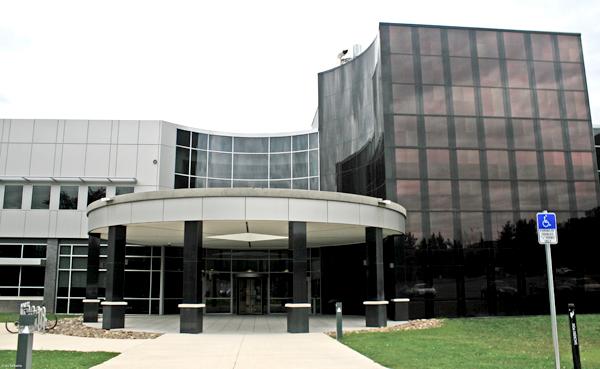
Binghamton University’s recently-opened Engineering and Science Building, a $66 million, 125,000-square-foot building in the Innovative Technologies Center across Murray Hill Road from campus, has been named “Best Green Project of the Year” by Engineering News-Record, a weekly magazine that focuses on the world-wide construction industry.
The Engineering and Science Building is connected to the Biotechnology Building, and it is the second of six planned buildings at the ITC.
Karen Fennie, spokeswoman for Physical Facilities, said that the building was designed to meet the standards of Leadership in Energy and Environmental Design (LEED), a system created by the U.S. Green Building Council.
Stantec, the company that worked with BU to plan the building’s structural, mechanical, electrical and fire protection design, applied to receive the award, according to Fennie.
“[The building] is a great addition to the University, not only because of the LEED elements that were included in design, but for how it will allow the Thomas J. Watson School of Engineering to expand its research and programs,” Fennie said.
The building will be the new home to the mechanical engineering and electric and computer engineering departments, the Watson School’s Dean’s office, the Integrated Electronics Engineering Center and other academic spaces.
Jenna Fierstein, a senior double-majoring in biology and environmental studies and president of the Student Environmental Awareness Club (SEAC), said that though she respects BU’s green-buiding effort, members of SEAC are skeptical that the Engineering and Science Building is an indication of an environmentally-conscious trend at Binghamton.
“The University touts that it is a ‘green’ school, and yet undergoes unnecessary aesthetic construction,” Fierstein said. “[BU] utilizes funds from the sale of mineral lease rights to hydrofracking companies … the school’s ‘greenness’ has a very gimmicky feel to it, rather than coming off as sincere.”
Fierstein added that she thinks the award is well-deserved based on the building’s design and represented progress in a positive direction.
“I do think that the building is a necessary step in the direction of sustainability, something which is itself necessary,” Fierstein said. “The use of geothermal energy, special attention to energy efficiency in general, and the fact that the building’s systems are able to be studied by students via hands-on investigation, are unarguably things to be lauded.”
One of the building’s “green” features is a wall of solar panels on the south side of the building.
Other aspects of the building’s design include geothermal heating and cooling methods, natural light use and the latest technology for heat recovery and humidity control.
New York State Sen. Thomas W. Libous (R) and New York State Assemblywoman Donna Lupardo (D) helped secure funding for the building, according to a press release issued by the University in 2008.
Krishnaswami “Hari” Srihari, dean of the Watson School, said he thinks that the building will improve the quality of education for students.
“The Watson School already has a reputation for academic excellence and the new facility will help us to attract and retain great faculty, staff and students,” he said. “This new state-of-the-art building will enable tremendous growth in our research capacity in the engineering and computer science fields. And we fully expect it to become a place where the engineers of the future will be inspired to go out and change the world.”
University spokeswoman Gail Glover said the building is expected to officially open next month.


